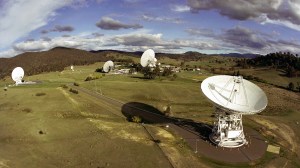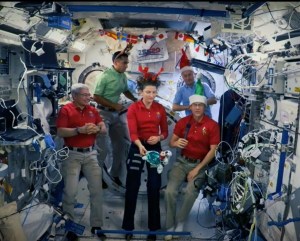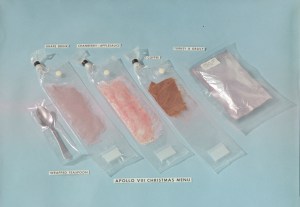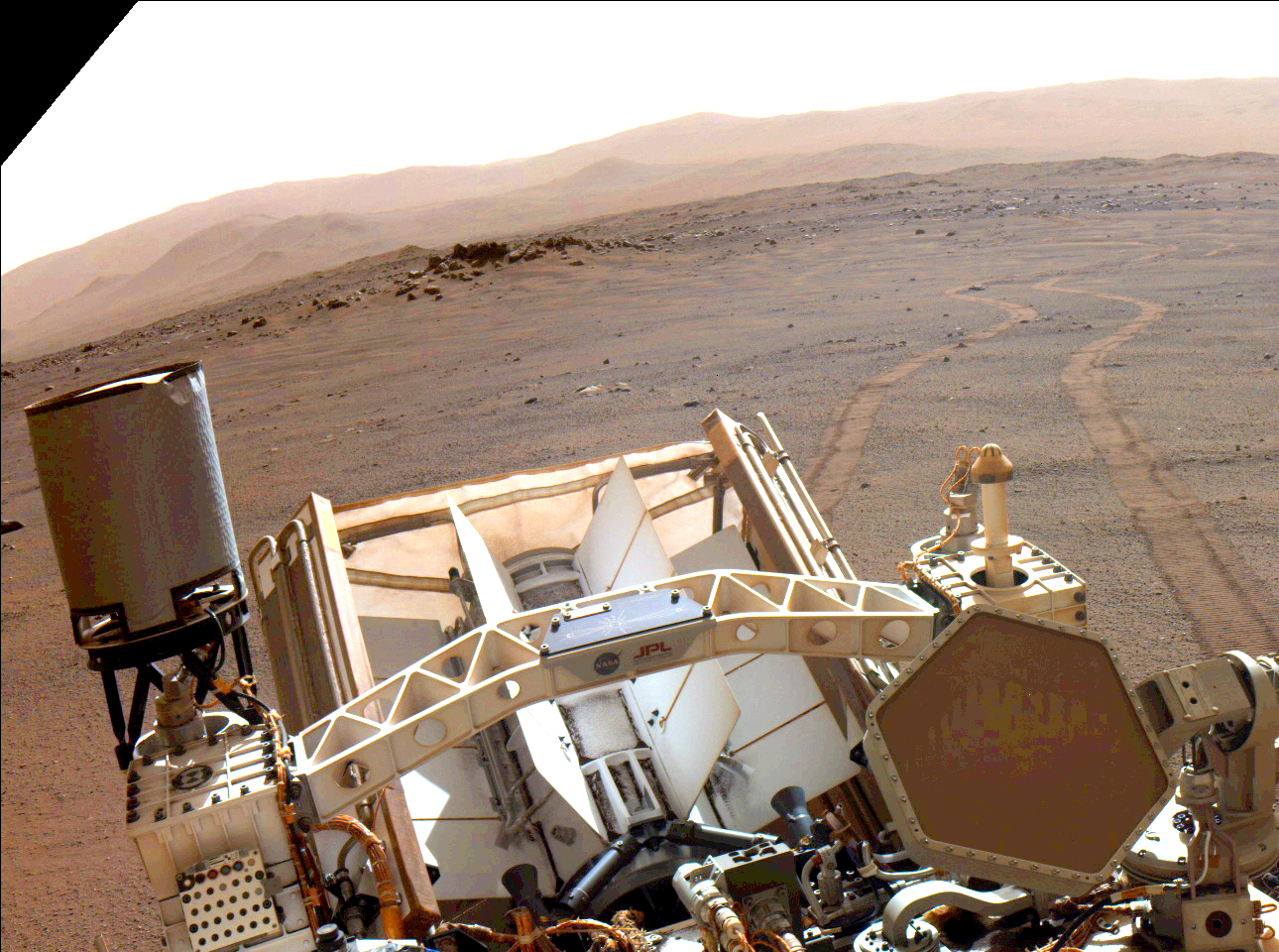10 Years Ago: The First Operational Cygnus Cargo Mission to the Space Station
To replace the cargo and crew transportation services to and from the International Space Station following the retirement of the space shuttle in 2011, the United States developed a novel approach to procure those services from American commercial entities. On Jan. 9, 2014, Orbital Sciences Corporation, one of two companies selected initially to provide cargo […]
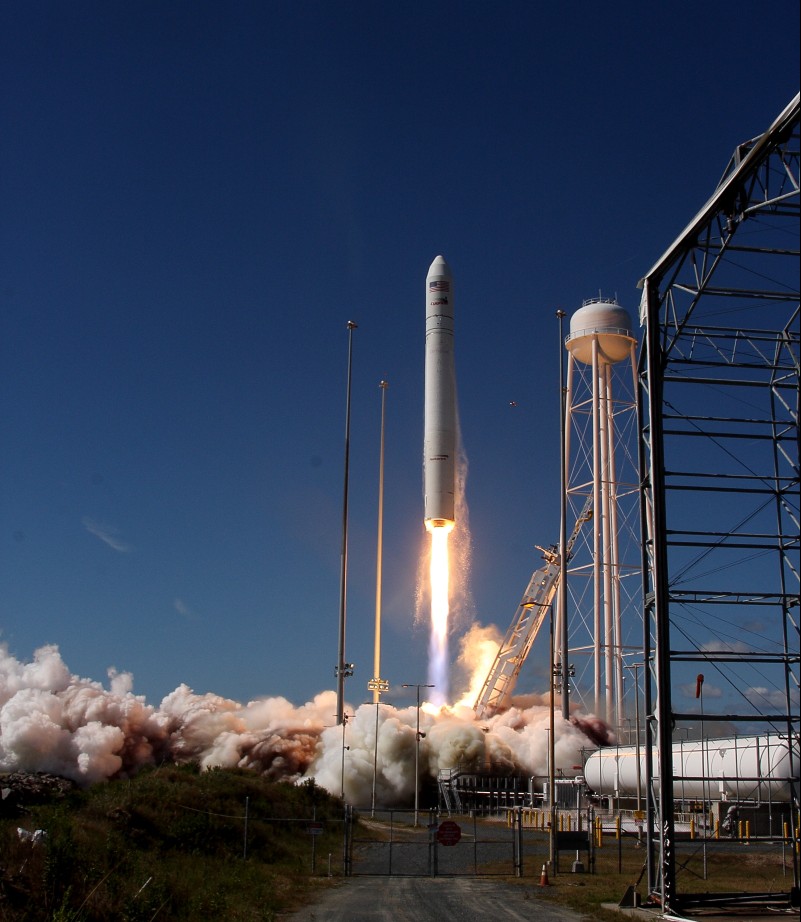
To replace the cargo and crew transportation services to and from the International Space Station following the retirement of the space shuttle in 2011, the United States developed a novel approach to procure those services from American commercial entities. On Jan. 9, 2014, Orbital Sciences Corporation, one of two companies selected initially to provide cargo transportation services, launched the first operational mission of its Cygnus spacecraft. During its one-month stay at the space station, the onboard Expedition 38 crew unloaded its cargo and then filled it with trash and unneeded equipment before releasing it for a destructive reentry. The novel approach of the government procuring services provided by private companies opened a new chapter in human space exploration.
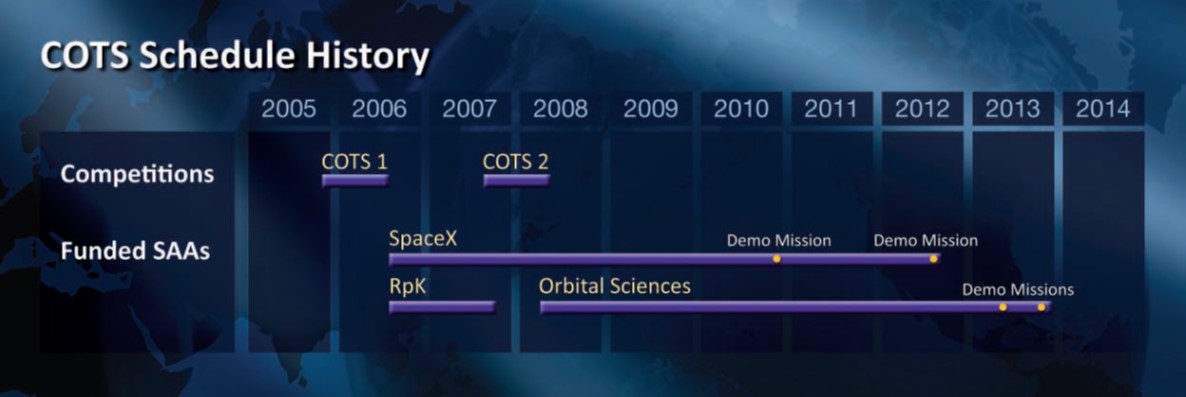
Timeline of the first phase of Commercial Orbital Transportation Services (COTS) activities.
On Jan. 14, 2004, President George W. Bush announced the Vision for Space Exploration (VSE). In addition to proposing a return to the Moon, the VSE saw the retirement of the space shuttle after completing space station assembly. The VSE encouraged NASA to acquire commercial cargo services to the space station as soon as practical, and NASA Administrator Michael D. Griffin established the Commercial Crew and Cargo Program Office (C3PO) in November 2005. The program inaugurated a new business model for the space agency that instead of traditional procurement contracts with private enterprise to deliver hardware and services, NASA now relied on the companies investing their own capital to develop the needed spacecraft and rockets. The agency then purchased the transportation services from the companies. The C3PO devised a two-phase process to develop cargo resupply services to the space station – the Commercial Orbital Transportation System (COTS) program for commercial entities to develop and demonstrate reliable commercial services followed by the Commercial Resupply Services (CRS) program to actually deliver cargo to the space station. On Aug. 18, 2006, NASA announced that Space Exploration Corporation (SpaceX) of Hawthorne, California, and Oklahoma City, Oklahoma-based Rocketplane Kistler (RpK) had won the first round of the COTS competition and signed Space Act Agreements (SAAs) with the two companies. In October 2007, NASA terminated the agreement with RpK since the company hadn’t raised enough capital. Following a second round of competitions, NASA selected and signed a SAA with Orbital Sciences Corporation (Orbital) of Dulles, Virginia, on Feb. 19, 2008.
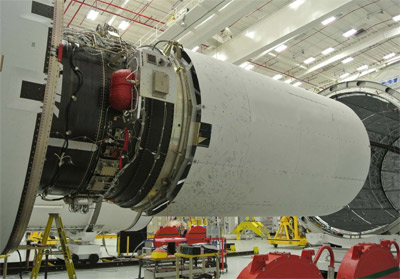
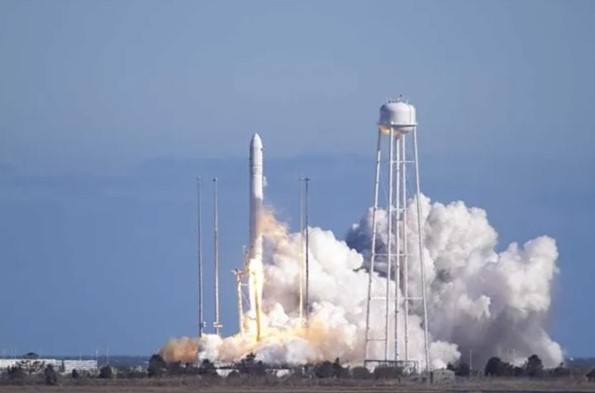
Left: Workers integrate the Cygnus mass simulator with its Antares launch vehicle. Right: First launch of an Antares rocket in 2013, carrying a Cygnus mass simulator.
Italian aerospace company Thales Alenia Space built Orbital’s Cygnus cargo vehicle, relying on its experience building the European Space Agency’s Columbus research module and the Multi-Purpose Logistics Modules for the space station. Orbital developed the two-stage Antares rocket to launch the Cygnus spacecraft. On Dec. 23, 2008, NASA announced the award of the first CRS contracts to SpaceX for 12 space station resupply missions using its Dragon spacecraft and to Orbital for eight missions, in 2015 adding eight more Dragon and three more Cygnus flights. On Jan. 14, 2016, a second CRS-2 contract not only guaranteed at least six more SpaceX and Orbital missions but also added a third contractor, Sparks, Nevada-based Sierra Nevada Corporation to provide at least six flights of a cargo version of their Dream Chaser reusable space plane. Orbital launched the first test flight of its Antares rocket from the Mid-Atlantic Regional Spaceport on Wallops Island, Virginia, on April 21, 2013, with a test payload to simulate the mass of a Cygnus spacecraft. The mission’s objectives did not include approaching the space station and the mass simulator burned up on reentry on May 10.

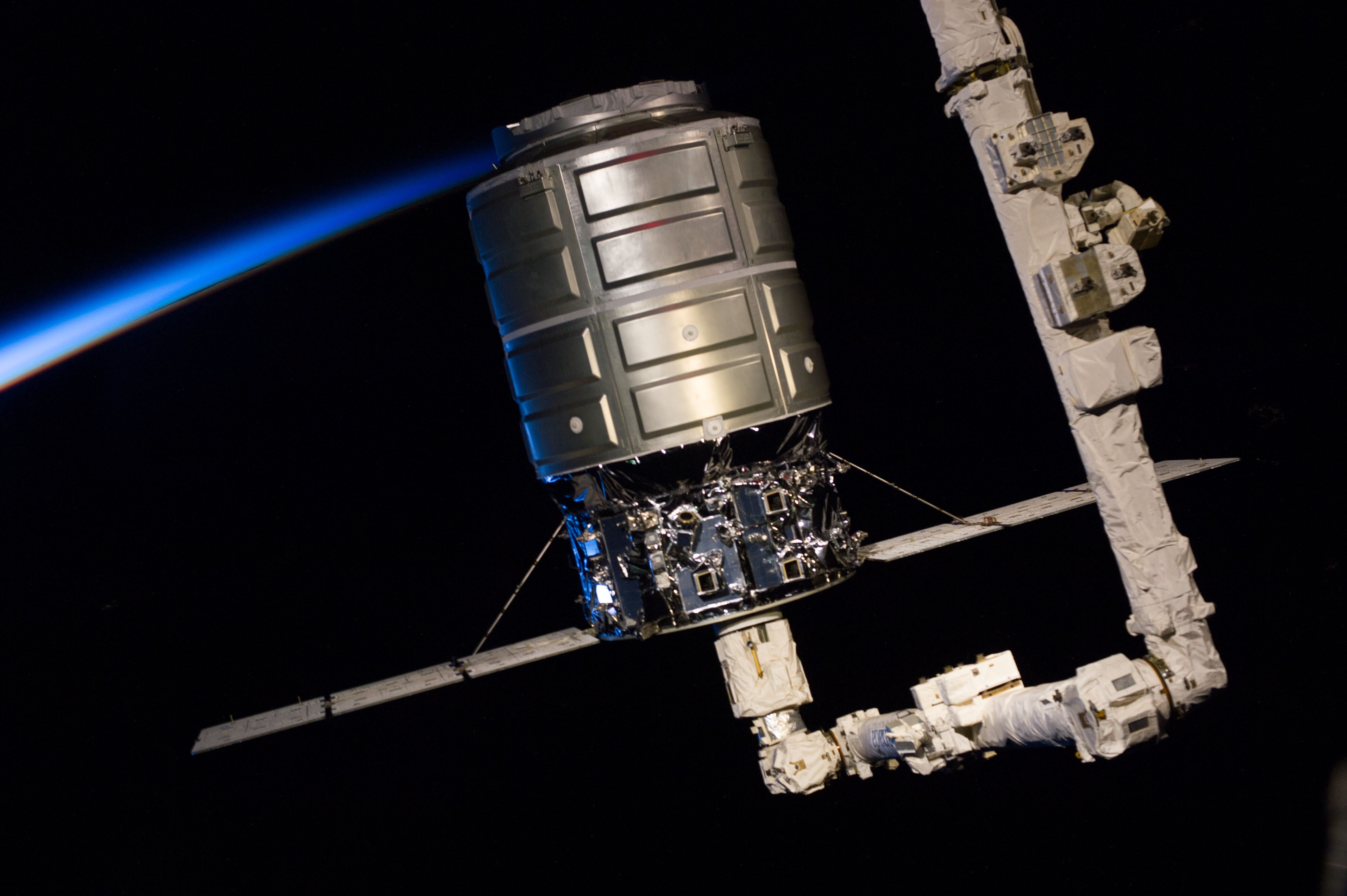
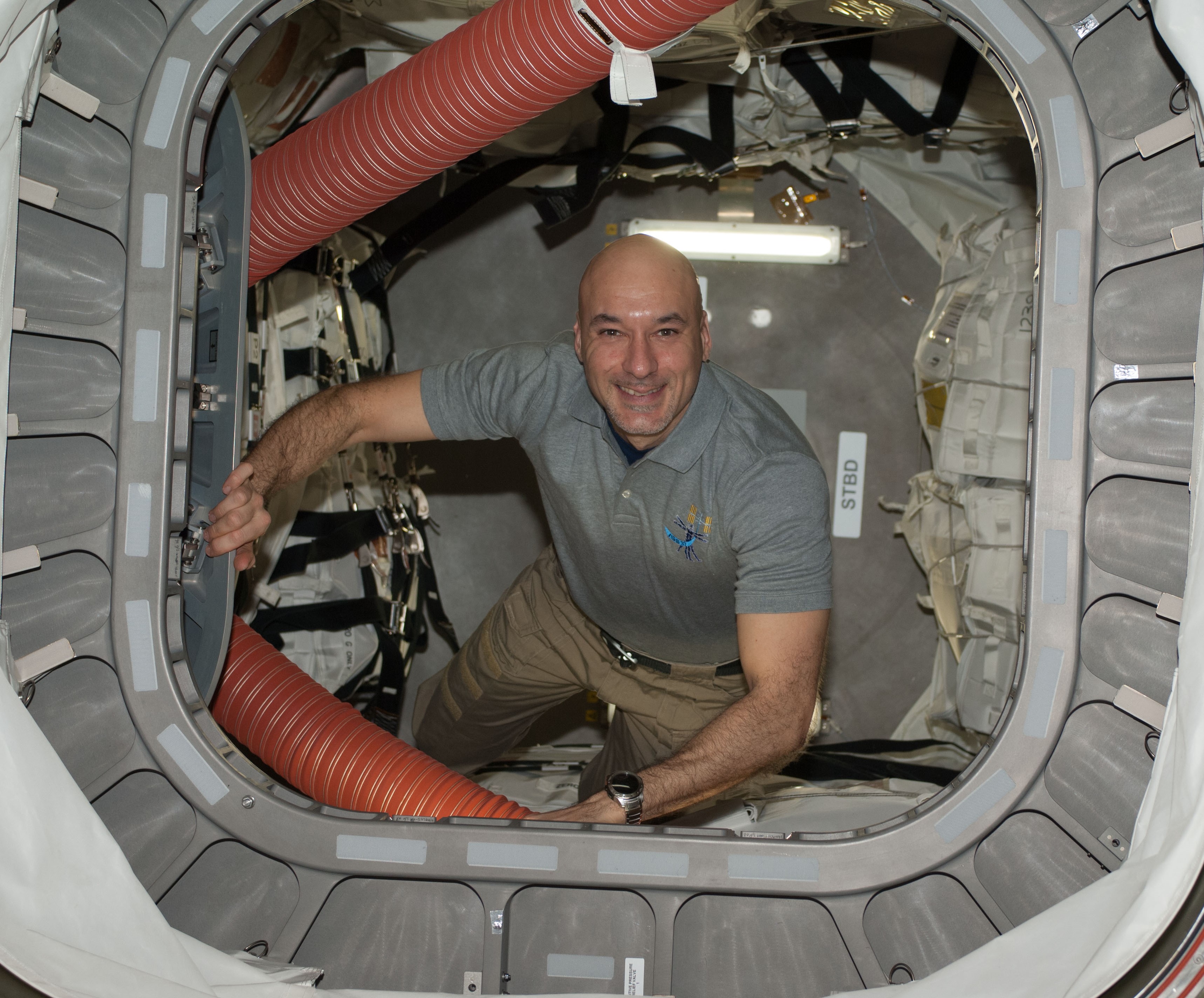
Left: Liftoff of the Antares rocket carrying the Cygnus Demo 1 mission. Middle: Cygnus Demo spacecraft grappled by Canadarm2 prior to berthing on the space station. Right: Expedition 37 crew member Luca S. Parmitano of the European Space Agency inside the Cygnus spacecraft during its Demo mission to the space station.
Orbital carried out a single demonstration mission, designated Cygnus Demo 1, launching on Sep. 18, 2013. The company began a tradition of naming their spacecraft after deceased astronauts or other aerospace notables, christening this first one the G. David Low after the former astronaut and Orbital employee who died in 2008. Orbital executive and Low’s fellow Class of 1984 astronaut Frank L. Culbertson said during a preflight press conference, “We were very proud to name [it] the G. David Low.” Eleven days after its launch, Expedition 37 crew member Luca S. Parmitano from the European Space Agency grappled the spacecraft with the Canadarm2 remote manipulator system and berthed it to the station’s Node 2 Harmony module’s nadir or Earth facing port. The crew unloaded the 1,543 pounds of supplies that it brought and on Oct. 22 unberthed it, loaded with 2,850 pounds of cargo for disposal. The next day, Cygnus fired its engine to begin the fiery reentry over the Pacific Ocean. The mission completed Orbital’s flight certification for its cargo vehicle.
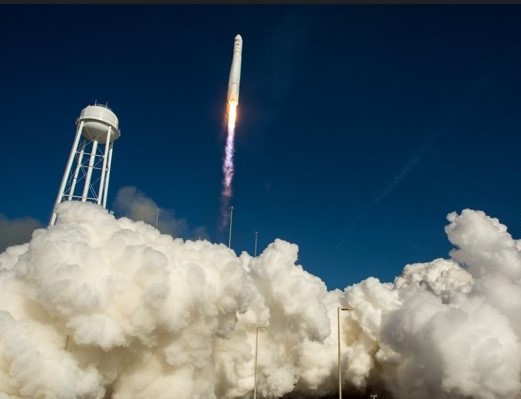
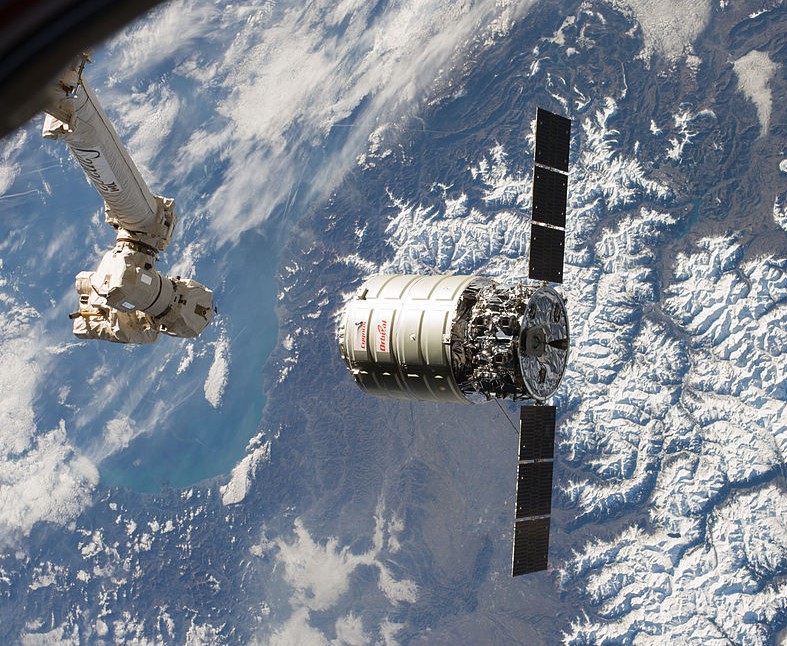
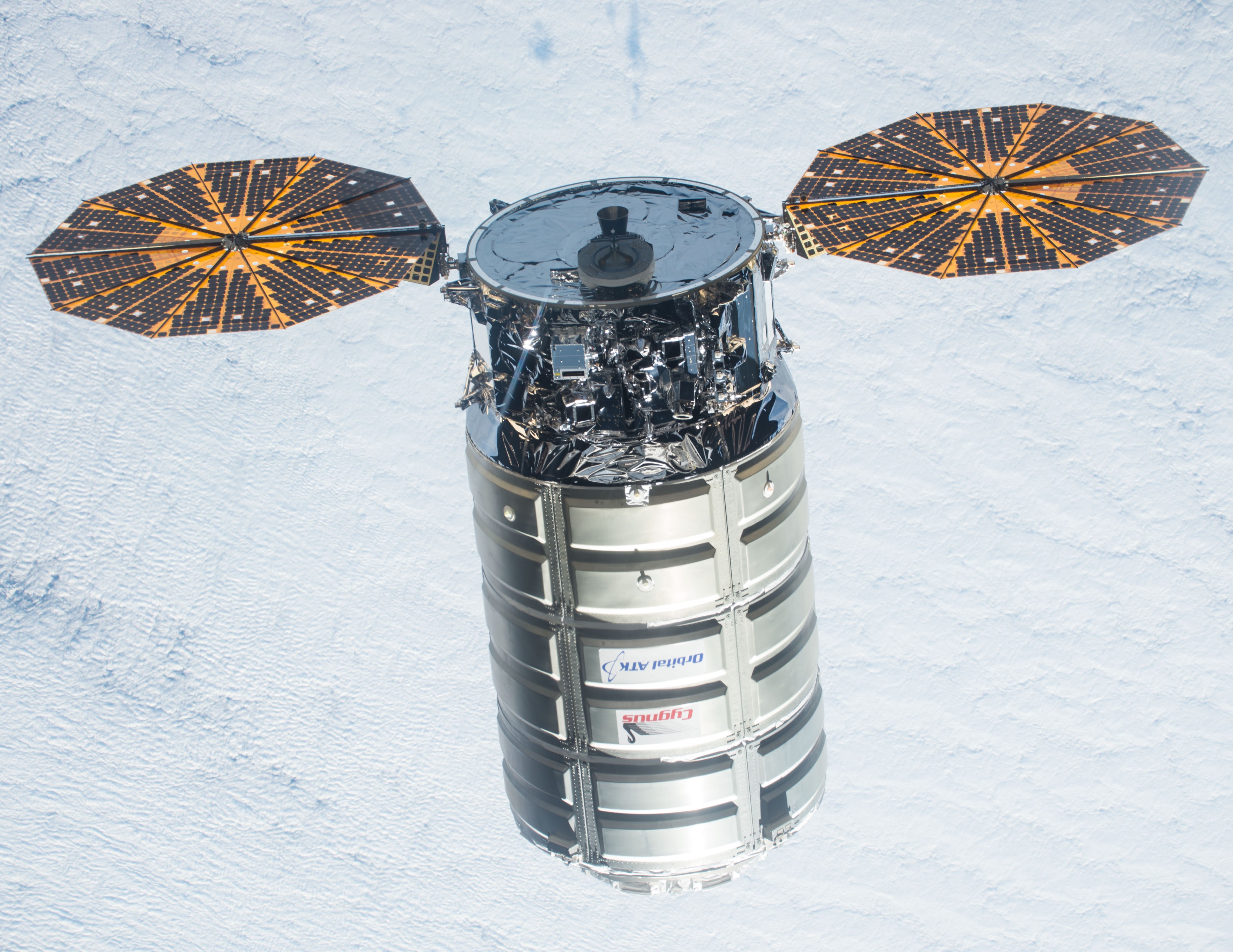
Left: Liftoff of the first operational Cygnus cargo resupply mission. Middle: The space station’s Canadarm2 robotic arm about to capture the first operational Cygnus spacecraft named SS C. Gordon Fullerton. Right: The first Enhanced Cygnus arriving at the space station in 2015; compare against the smaller standard Cygnus.
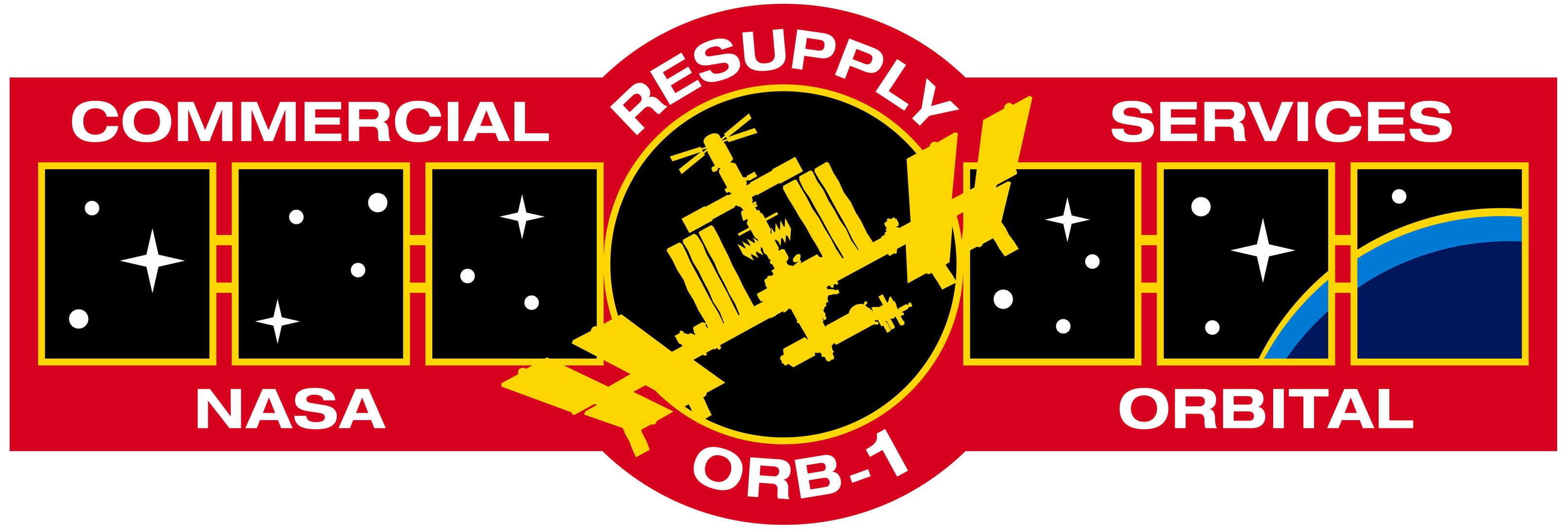
The mission patch for Orbital’s first operational cargo resupply mission to the space station.
The first operational Cygnus mission, designated Orb-1, got underway on Jan. 9, 2014. The spacecraft named after NASA astronaut C. Gordon Fullerton, who died the previous year, arrived at the space station three days later. Expedition 38 crew member NASA astronaut Michael S. Hopkins used Canadarm2 to grapple and berth it to the Harmony module. The onboard crew unloaded the 2,780 pounds of supplies that the spacecraft brought to the station and unberthed it on Feb. 18. It disposed of 3,240 pounds of trash and other unneeded cargo. To date, 19 Cygnus spacecraft have lofted more than 64 tons of logistics to the space station, with only one launch failure, the Orb-3 mission in October 2014. This launch failure and one with SpaceX in June 2015 highlighted the wisdom of the decision to use two separate and independent systems to launch cargo to the space station. Beginning in late 2015, Orbital introduced an Enhanced Cygnus with a 50% increase in internal volume to carry more cargo. In addition to upgrading its spacecraft and rocket, Orbital underwent some corporate restructuring over the years, first merging with Alliant Technologies in 2015 to form Orbital ATK. In 2018 Northrup Grumman acquired Orbital ATK to form Northrup Grumman Innovation Systems. Upgrades to the space station itself, such as opening up a second berthing port on the Unity module in 2015 allowed two cargo vehicles to be docked at the same time, with a third port available in 2019 for SpaceX crew and cargo vehicles to dock directly at the station without the need for astronauts to use Canadarm2 to grapple and berth them. Beginning in 2024, a fourth port will allow four cargo and crew vehicles to remain at the station simultaneously.
What's Your Reaction?































